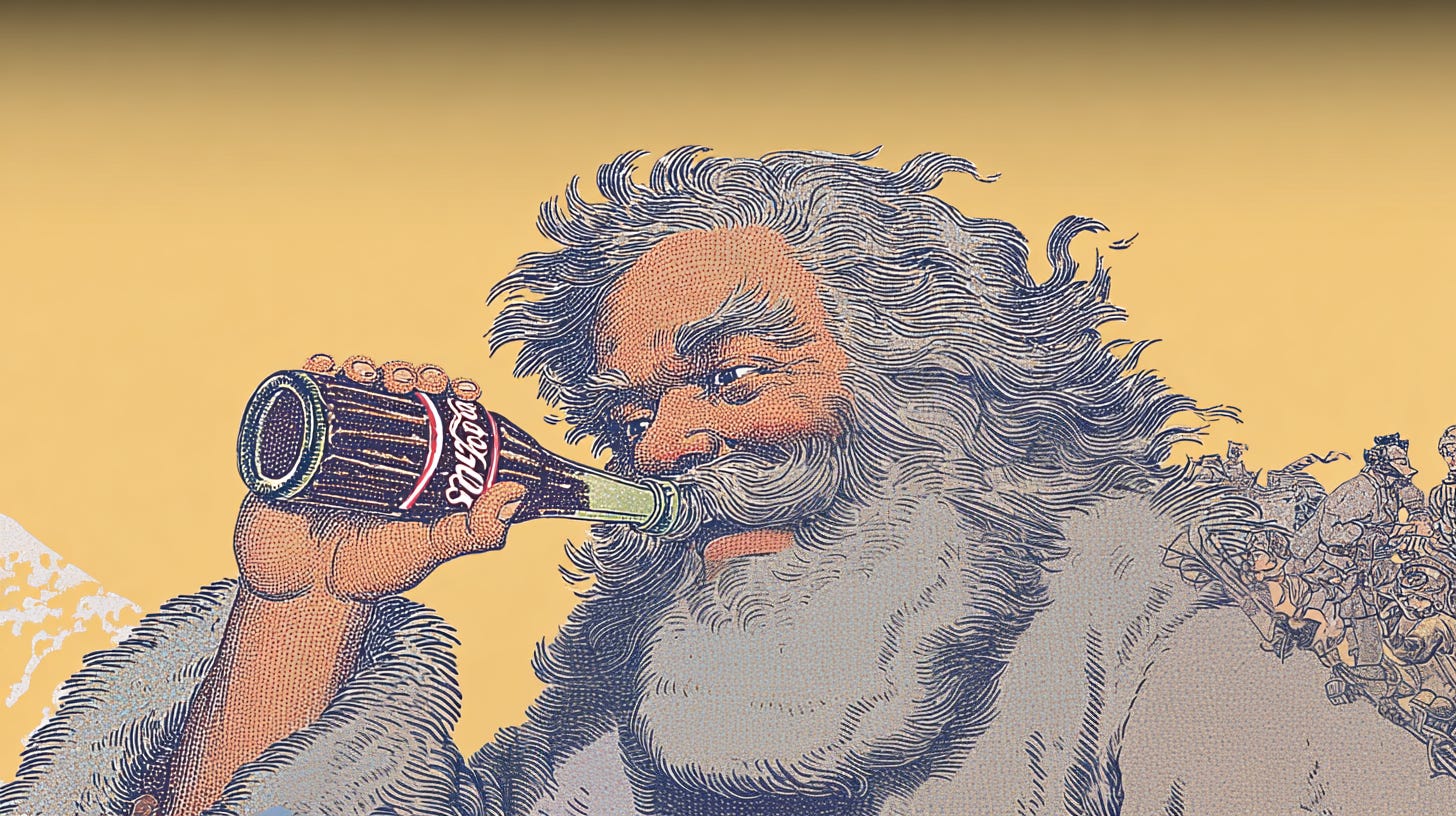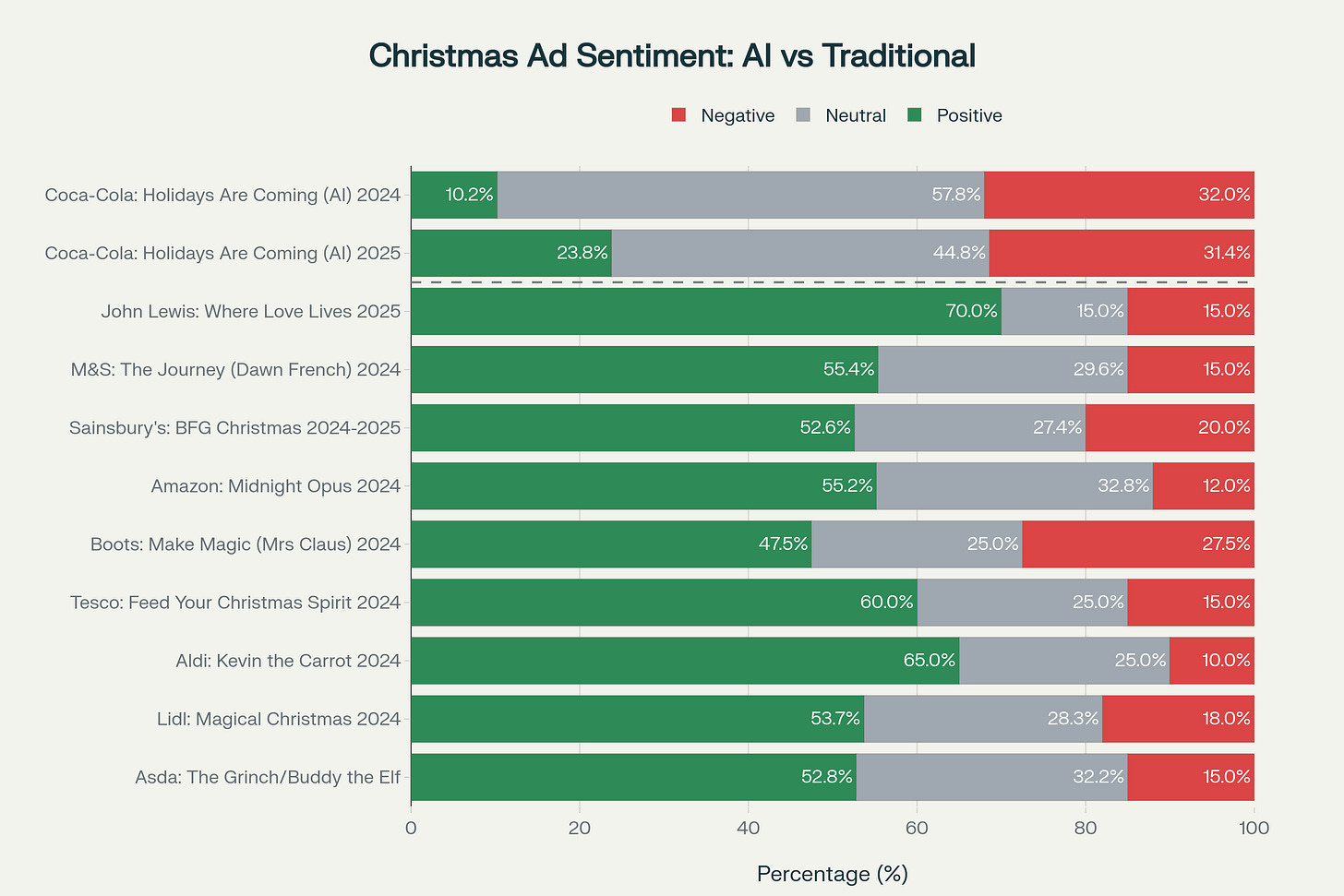The Battle For Christmas: AI vs Tradition, And Why Coca-Cola Is Betting On The Future
How Coca-Cola’s AI Christmas ads sparked backlash and why bold innovation may redefine holiday storytelling.
Christmas ads have always been emotional rituals, not just commercials. They are cultural signals. For decades, certain campaigns have become part of how the world feels Christmas: Coca-Cola’s red trucks rolling through snowy landscapes. Hershey’s Kisses ringing like bells since 1989. John Lewis launching animated worlds capable of making a nation stop, cry, remember, and feel. These campaigns weren’t just successful - they set the global expectation that Christmas advertising must create warmth, nostalgia, and connection. No other genre of advertising depends so deeply on emotional resonance. Christmas is a season built on memory - and great brands learned early: emotion is the real performance metric.
Coca-Cola’s Bold AI Pivot (2024–2025)
2024: The First Big Leap
In 2024, Coca-Cola made one of the most radical creative decisions in modern Christmas advertising: they used AI to recreate their most sacred Christmas narrative. Three studios were involved. Multiple AI models were combined. Thousands of short fragments were generated. And in the end — the execution struggled. Trucks changed shape mid-frame. Wheels didn’t spin. Human faces drifted into uncanny valley territory. Audiences instantly felt the absence of human emotional texture.
This wasn’t a quiet experiment — it was one of the most visible AI brand activations of the year. And because Christmas is emotionally sacred territory, the internet responded with unusually strong criticism. The backlash was global. The ridicule was loud. This is the brutal cost of being first.
2025: The Second, Smarter Attempt
But Coca-Cola did not retreat. In 2025, instead of abandoning the idea — they doubled down.
The brand removed human characters entirely, reducing the risk of uncanny valley by leaning into a world of animals and an AI Santa inspired by original Coca-Cola illustrations. Production shifted to highly constrained animal-based storytelling and stylized environments. It was a more intelligent design choice. The technical execution was noticeably better.
They generated more than 70,000 shots across three days and curated down to only 20–30 usable sequences. The improvement was clear. The emotional impact was still not enough. Trust metrics still underperformed. But the creative ambition was unmistakable.
Coca-Cola wasn’t trying to win Christmas this year. They were trying to define how Christmas ads might be produced in five years.
Behind the scenes video
Traditional Brands Held Their Ground
While Coca-Cola was taking arrows, every other major Christmas advertiser stayed with traditional production. John Lewis’s “Where Love Lives” (2025) was shot traditionally. Sainsbury’s “BFG” 2024–2025 used classic cinematic production. M&S, Amazon, Boots, Tesco, Lidl, Asda, Waitrose, Morrisons - all chose craft. All chose emotional storytelling. All chose human production.
It worked. The sentiment data is clear: traditional Christmas ads dramatically outperformed AI ads emotionally in 2024–2025.
Sentiment Analysis: What the Data Actually Shows
According to multiple sentiment platforms (DAIVID, System1, CARMA, Truescope and consumer surveys), Coca-Cola’s 2024 AI Christmas campaign recorded only 10.2% positive sentiment, 32.0% negative sentiment, and the rest neutral. The words that dominated feedback: “soulless”, “creepy”, “disappointing”. It actively damaged trust. It created public brand backlash. The 2025 version improved in craft, but was still 2% more likely to evoke distrust than industry norms.
Meanwhile, traditional Christmas ads drove overwhelmingly positive sentiment. For example, M&S’s “The Journey” (2024) delivered 55.4% intense positive emotion, Amazon’s “Midnight Opus” (2024) reached 55.2% intense positive emotion, and Aldi’s Kevin the Carrot continued to generate ~65% positive sentiment
Emotionally, there was no comparison. Traditional ads delivered the Christmas spirit that audiences crave. AI ads, today, do not.
Yet there’s a paradox beneath the numbers: Coca-Cola’s AI ads still generated attention, discussion, recall. They were distinct - even if they didn’t feel human.
Comparative Analysis: Innovation vs Authenticity
The industry is standing at a crossroads. Traditional storytelling has become extremely consistent, predictable, and safe - and consumers still reward it emotionally. Meanwhile, AI-generated Christmas ads currently fail the emotional bar required for Christmas advertising - but they collapse production time from one year to roughly one month. And Coca-Cola is not pretending they have “perfected” AI Christmas creativity yet. They are simply refusing to be late to the curve.
This is why this moment matters. Yes - today, traditional Christmas ads are 15–300% more effective at creating positive emotions. But innovation cycles move fast. And the very thing Coca-Cola is being ridiculed for now - may, in five years - become the standard pipeline everyone uses.
Christmas ads are not just about production. They are also about signaling who is inventing the future.
Who Will Be Remembered?
Christmas is about emotion. Christmas advertising is about creating emotion at scale. Right now, AI struggles with soul - and consumers can feel it. But innovation has always moved through this phase: early friction, early rejection, early contempt. Before it becomes normal.
Coca-Cola knew the risks. Coca-Cola acted anyway. And history rarely remembers the brands who stayed safe - it remembers the ones who dared to shape the next frontier.
So here is the real question every leader in this industry must now ask:
In five years, when AI-native production becomes standard - will Coca-Cola be remembered as the brand that was wrong… or the brand that was first?




